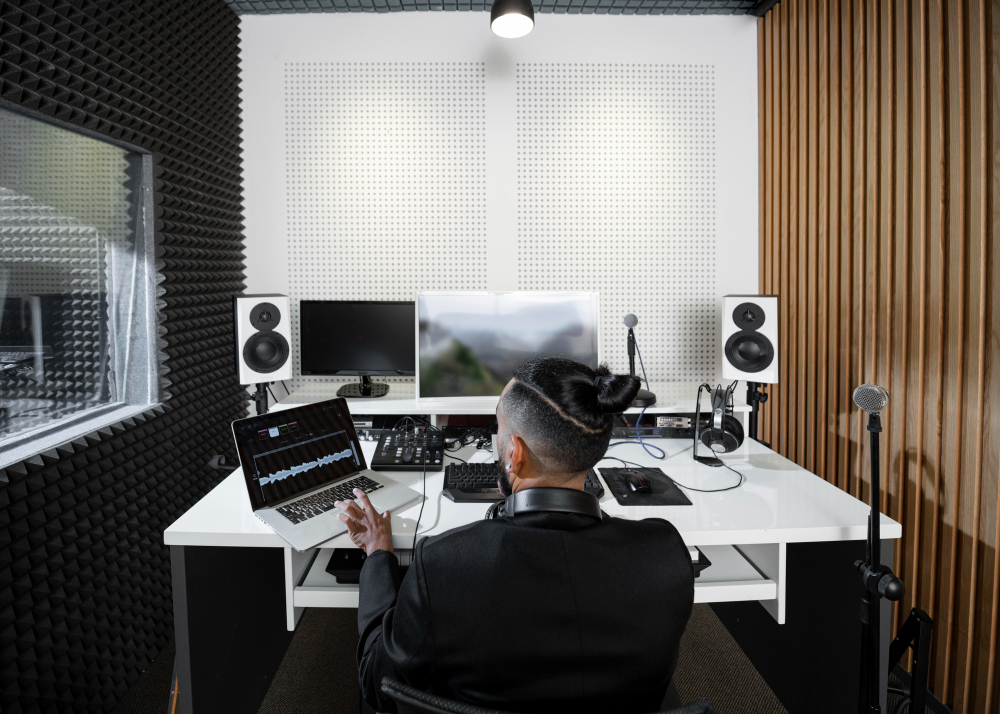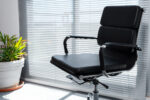
Office Workstation Ideas: Design a Functional Workspace
Designing a workspace isn’t just about furniture placement or color coordination; it’s about creating an environment where people want to work, focus naturally, and feel supported throughout their day.
A well-designed workstation does more than look good; it impacts posture, energy, creativity, communication, and, ultimately, productivity.
Whether you’re building a modern corporate office or setting up a small home-based workstation, the layout, functionality, and comfort of that space significantly impact the quality of work that takes place there.
As the definition of “office” continues to evolve, workstations are no longer just desks with chairs; they are now multifunctional spaces that support a variety of tasks.
They’re agile zones, customized pods, wellness-supportive spaces, and multi-modal environments. When thoughtfully executed, they support not only your tasks but also your well-being.
In this comprehensive guide, we’ll explore expert-level workstation ideas, how to apply them in various settings, and how to make them work for your specific needs without overspending or overcomplicating.
Why Office Workstation Design is More than Just a Trend
The physical design of a workstation has a profound psychological and physiological impact on people that most people are unaware of.
Where and how you work influences your posture, mental focus, stress levels, and communication with others.
An uncomfortable, cluttered, or poorly lit workstation can subtly erode productivity and cause fatigue over time.
On the other hand, a functional and personalized setup helps maintain mental clarity, keeps your workflow organized, and promotes healthy working habits.
Businesses that take office design layouts seriously are more likely to see increased employee satisfaction, reduced absenteeism due to physical discomfort, and improved collaboration across teams.
It’s not about aesthetics for the sake of appearances; it’s about empowering people to do better work by designing an environment that helps them thrive. In this context, workstation design becomes a business strategy, not just a design choice.
Vertical Workstations: Designing With Height and Movement in Mind
In fast-paced and compact work environments, Office configuration ideas are everywhere, but it’s up to you to create a work environment where every inch of space counts. Vertical workstations effectively utilize height to maximize functionality without occupying additional floor space.
This setup often includes sit-to-stand desks that can be raised or lowered throughout the day, as well as overhead shelving to keep essential tools, documents, and personal items within arm’s reach yet off the main surface.
These workstations also encourage more movement throughout the day by allowing workers to shift between sitting and standing positions.
Research indicates that even minor posture adjustments can enhance circulation, alleviate fatigue, and enhance focus.
In spaces where square footage is limited, vertical setups offer an elegant and ergonomic solution that doesn’t compromise efficiency.
Layout Samples, Desk Positioning & Templates for Teams
Designing a functional workstation doesn’t stop at choosing the right desk or adding ergonomic seating; it requires a strategic approach to space.
How you position desks, allocate zones, and organize furniture determines how productive, collaborative, or distracted a team might feel.
Here are sample layout ideas and common pitfalls to avoid when designing workstations for different team sizes and work styles.
For Individuals & Solo Workstations
A single-person layout should prioritize access to natural light, privacy, and storage efficiency. Position the desk perpendicular to a window (to reduce glare) and leave space behind the chair for movement. Use vertical storage or wall-mounted shelves to declutter surfaces.
Pro Tip: Avoid placing desks directly facing walls; it can create a boxed-in, stifling atmosphere. Instead, angle the desk slightly or add visual interest in front (like art or plants).
For 2–3 Person Teams
Small teams benefit from L-shaped or T-shaped desk arrangements, which strike a balance between collaboration and autonomy.
Position desks to allow side-by-side conversation without interrupting individual focus. If space is tight, modular desks with low dividers help carve out semi-private zones.
Common Mistake: Placing all desks against different walls. This creates physical and emotional distance, hurting spontaneous communication and cohesion.
For 4–6 Person Teams
For mid-size teams, cluster pods or 4-seater units work well. You can create cross-shaped formations or two parallel rows with shared center storage. Add acoustic dividers or frosted glass to offer privacy while maintaining visibility.
Suggested Template:
- Place the cluster near a shared resource wall (whiteboards, printers, supply cabinets).
- Allow at least 3 feet of space between clusters for movement and team huddles.
- Position lighting evenly across all desks to avoid shadow zones.
For Large or Open-Plan Teams
In larger teams, functions are defined within specific zones. Use islands of workstations, clusters of 4, 6, or 8, separated by collaboration nooks, walking paths, or lounge areas.
Implement zoning through the use of carpet tiles, partitions, or lighting changes to guide the flow without closing off the space.
Key Consideration: Avoid the “sea of desks” layout, which may appear efficient but actually leads to noise overload, distraction, and communication chaos. Instead, anchor each section with its purpose, focus, meet, collaborate, or retreat.
Desk Positioning 101: What to Keep in Mind
- Avoid glare: Never place screens directly opposite windows or under overhead lights.
- Prioritize flow: Walkways should be at least 3 feet wide, even in tight offices.
- Don’t crowd the walls: Central placements can often foster better collaboration than wall-lined desks.
- Cable management: Place desks near power sources and plan for under-desk cable trays or grommets to ensure a tidy workspace.
Activity Pods: Purpose-Built Zones that Support Deep Work

Activity pods are becoming increasingly popular in office design because they enable teams to define spaces tailored to specific types of work.
A pod dedicated to brainstorming might feature writable surfaces, collaborative seating, and mood-enhancing colors.
Another pod, designed for deep focus, might offer softer lighting, acoustic padding, and a minimal aesthetic to reduce distractions.
The beauty of activity pods lies in their flexibility. They give individuals autonomy over how they engage with their environment and offer spaces that align with the mental mode they’re in: creative, analytical, or reflective.
By doing so, they help employees transition between different tasks more naturally and reduce the friction that often comes with context switching.
Agile Collaboration Zones: Making Teamwork Flow Naturally
When designing, it’s also beneficial to have some shared office layout ideas, as collaboration doesn’t always occur in scheduled meetings; it thrives in spontaneous conversations, whiteboard sessions, and quick team huddles. Agile collaboration zones are designed to support this kind of fluid teamwork.
These are areas within the office that feature movable furniture, rolling whiteboards, and tech-friendly layouts that can be quickly reconfigured to suit a group’s immediate needs.
Rather than forcing collaboration into rigid conference rooms, these zones encourage it to become an integral part of the daily work rhythm.
They create low-barrier spaces for dialogue, problem-solving, and creative thinking without disrupting individual focus areas.
Agile zones are especially valuable for fast-moving teams that require frequent iteration and rapid adaptation.
Nature-Inspired Retreats: Bringing Calm and Clarity into the Workplace
The science behind biophilic design is precise: nature has a calming and restorative effect on the human brain.
Nature-inspired retreats within the office mimic this effect by adding elements such as natural materials, indoor plants, ambient lighting, and earthy color palettes.
These spaces serve as sanctuaries where employees can momentarily disconnect from screens, noise, and the fast-paced demands of their work.
Even short periods spent in these environments have been shown to reduce stress, restore attention span, and elevate mood.
Whether it’s a corner with live plants and soft seating or a private room with wood textures and natural light, these retreats can reinvigorate an exhausted mind and quietly boost long-term productivity.
Wellness Nooks: Supporting Mental Health through Space
 Workstations are not only physical but also emotional environments. Wellness nooks acknowledge this by creating designated spots where employees can pause, reset, and reconnect with themselves.
Workstations are not only physical but also emotional environments. Wellness nooks acknowledge this by creating designated spots where employees can pause, reset, and reconnect with themselves.
These nooks feature aromatherapy diffusers, meditation cushions, soft blankets, or a quiet space with low lighting and noise-canceling features.
Unlike break rooms, wellness nooks are not designed for chatter or snacks; they’re intended for solitude and recovery.
They give employees permission to take short mental health breaks, which have been proven to reduce anxiety, increase resilience, and boost creative thinking.
The presence of these spaces communicates that well-being is not just encouraged; it’s built into the fabric of the workplace.
Sensory Stations: Engaging the Senses to Ground the Mind
Sensory design in offices is about more than aesthetics; it’s about creating multi-dimensional experiences that help regulate attention and mood. Sensory stations achieve this by engaging the senses of touch, sound, sight, and even scent.
A textured wall panel, an ambient lighting system, or a rotating soundscape can help bring someone back to the present moment when they feel overstimulated or disconnected.
These stations are particularly effective in high-pressure environments, offering a controlled space to reduce sensory overload or re-energize through stimulation.
They make the office feel more human, responding to the natural rhythms of focus, fatigue, and recovery that every worker experiences.
Multi-Modal Workstations: Flexibility without Sacrificing Function
The modern worker often needs to wear many hats, and so should their workspace. Multi-modal workstations are highly adaptive environments that support both focused individual tasks and collaborative sessions, sometimes within the same day.
These setups often include movable partitions, personal lighting controls, adjustable monitors, and modular layouts that can be easily transformed without disrupting workflow.
This level of flexibility is invaluable in hybrid work cultures where people come into the office for collaboration but still need quiet space for deep work.
With a multi-modal design, the same workstation can offer both structure and spontaneity, helping people transition smoothly between different mental and physical demands.
The Versatile Power of 4-Seater Workstations
Among all the layout options, the 4-seater workstation strikes a unique balance between independence and interactivity.
It brings together four individual workspaces into a shared structure that encourages collaboration without eliminating boundaries.
These units are especially effective for departments that work in close coordination but still require dedicated space for focus, such as design, sales, or customer support teams.
Modern 4-seater designs feature frosted glass dividers for privacy, built-in storage to minimize surface clutter, and integrated cable management for a structured, clean, and organized work area.
Features like sit-to-stand compatibility and acoustic panels make them suitable for extended work hours.
Due to their compact footprint, 4-seater stations are ideal for growing teams and open-plan offices where space needs to be utilized efficiently.
Choosing the Right Workstation Setup: 4 Core Steps
The procedure of selecting or designing the right workstation layout shouldn’t be rushed. It begins by evaluating the space you have, the nature of your team’s work, and the long-term goals of your office environment.
Step one involves measuring the available floor area and noting key features, such as natural light, ventilation, and access to power.
These elements affect how workstations are positioned and how comfortable they’ll be throughout the day.
Next, consider how different teams work. Do they collaborate constantly or need quiet time to concentrate?
Do their tasks require frequent movement, access to tools, or special technology? These factors shape whether you choose 4-seaters, vertical units, pods, or hybrid solutions.
Once the layout direction is clear, prioritize comfort and efficiency. Ergonomic chairs, adjustable desks, integrated storage, and proper lighting aren’t just luxuries; they’re essentials for physical health and mental focus.
Finally, think about aesthetics and flexibility. The best workspaces blend form and function, offering durability and beauty while remaining adaptable to future needs.
Applying these Concepts at Home: Building a High-Performance Home Office
For those working remotely or in hybrid models, workstation principles apply just as strongly at home.
A functional home office begins with a thoughtful layout, positioning your desk near a window to take advantage of natural light, creating vertical storage to reduce surface clutter, and investing in an ergonomic chair that supports long sessions.
Cable management is crucial in smaller spaces. Wireless tools, hidden power strips, and simple desk grommets can transform a tangled mess into a clean, focused environment.
If your home office shares space with other living areas, subtle room dividers or visual cues can define your “work zone” and reinforce boundaries. Above all, your home workstation should feel like a place you want to return to.
Add small personal touches, such as a favorite plant, art piece, or rug, to ground the space in comfort and personality.
With the right design, working from home can be just as productive and even more fulfilling than a traditional office.
Frequently Asked Questions (FAQs)
Question: What’s the best layout for small offices?
Answer: In small offices, vertical workstations, modular 4-seaters, and wall-mounted storage help maximize floor space while still supporting focused work. Choosing furniture that combines multiple functions, such as a desk with built-in shelves or sit-stand capability, can enhance flexibility without crowding the room.
Question: Are 4-seater workstations suitable for remote workers?
Answer: Yes, 4-seater workstations are ideal for shared home offices or co-working environments. If you’re sharing space with family or team members, the defined structure of a 4-seater setup helps establish individual zones while maintaining collaboration when needed.
Question: How can I make a workstation more ergonomic?
Answer: Begin with an adjustable chair that supports the natural curve of your lumbar spine. Use a desk that allows for proper elbow and wrist positioning. Keep screens at eye level, and incorporate footrests, wrist supports, and anti-fatigue mats if you work in a standing position. Good lighting and minimal clutter also reduce visual and physical strain.
Question: How often should I redesign or update my workstation?
Answer: If your space starts to feel uncomfortable, unproductive, or cluttered, it’s time for a reset. Even small changes, such as adjusting the monitor height or swapping chairs, can make a significant difference. In growing teams or hybrid environments, revisit workstation design every 12–18 months to ensure it continues to support evolving workstyles.
Final Thoughts: Your Workstation is Your Foundation
Your workstation isn’t a background detail. It’s the foundation of your productivity, creativity, and well-being.
Whether you’re part of a growing team, a remote worker carving out your corner, or a business leader designing spaces for others, your workstation setup has the power to either elevate your work or get in the way of it.
Every layout, material, and accessory sends a message about how much the space supports the people in it.
The best offices aren’t just efficient; they’re human, responsive, and flexible. And they prove that intelligent design isn’t about complexity or cost; it’s about intention.
If you’re ready to create a better working experience for yourself or your team, you don’t need to overspend to do it.
Looking for Functional, Budget-Friendly Options?
The Cheaper Office Solutions specializes in cost-effective, high-quality workstations for every kind of work environment.
From adjustable desks and ergonomic seating to modular 4-seater setups and customizable add-ons, we help businesses, and remote workers create powerful workspaces without the high-end price tag.

 17014 S. Vermont Ave #C, Gardena, CA 90247
17014 S. Vermont Ave #C, Gardena, CA 90247 (310) 856-3456
(310) 856-3456



